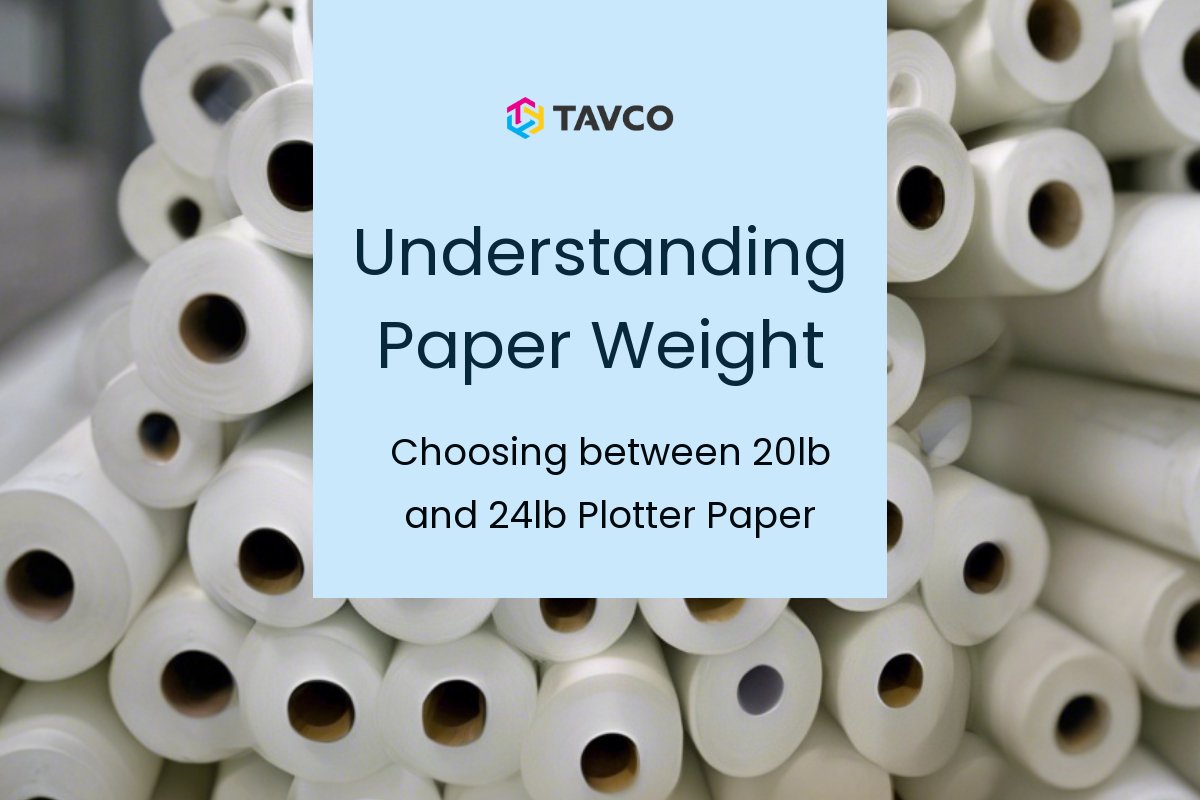When preparing a document, the weight of the paper you choose is more than just a detail—it's a critical element that enhances the presentation of your work.
Whether for a business report, a presentation, or official documents, understanding the difference between 20lb and 24lb paper can elevate the form and, consequently, the perceived value of your content.
The term "bond paper" originated in the late 1800s when the U.S. government printed bonds on 20-lb paper. Today, the bond paper refers to various weights, each serving different purposes in the business and printing world.
Exploring Paper Weights
Paper weight comparison—While 20 lb and 24 lb papers are standard, other weights, such as 28 lb, 36 lb, and even 46 lb, are also available, each suitable for different applications. For instance, 46 lb paper, known for its stiffness, is often the best paper for printing high-quality brochures, menus, and posters. However, a 20 lb bond is generally the most economical printing option for everyday printing purposes.
How Is Paper Weight Determined?
Paper weight represents the weight of 500 sheets at their original size, typically 17x22 inches. Therefore, 500 sheets of 20-lb paper at this size weigh 20 lbs. Interestingly, the market sometimes labels paper as 60 lb when it feels and measures similarly thick to 20-lb paper due to originating from a larger sheet size.
Different Measures of Paper Weight
GSM explained - you can also express paper weight in grams per square meter (GSM), which measures the paper's density. For instance, 20 lb paper corresponds to 75 GSM, while 24 lb paper approximates 89 GSM. Additionally, one measures thickness in mils (1/1000th of an inch), a unit distinct from millimeters. GSM is usually the unit of measurement for more professional printing paper, such as photo papers, banner material, and even film.
Choosing the Right Paper: 20lb vs. 24lb
For everyday internal documents, such as memos or draft prints, 20lb paper is economical and sufficient. However, for documents that require a more professional print quality or durability, such as official reports or presentations, 24lb paper is preferable. It offers a thicker feel, reducing transparency and enhancing the documents' look and feel.
Why Not Heavier Paper?
While one might consider using even thicker paper, like 36 lb, for the most formal documents, this choice often comes down to preference. A 36-lb paper feels significantly stiffer and gives a sense of substantial quality, but for most practical purposes, 24-lb paper strikes an excellent balance between cost, quality, and usability.
The Importance of Paper Quality
Opting for a higher weight, like 24lb paper, for significant documents subtly emphasizes their importance, reinforcing the seriousness and professionalism of your presentation.
Remember, paper quality can be as important as printed information. Choosing high-quality paper from reliable suppliers ensures consistency, reliability, and satisfaction with every print job.
When you require specific or custom paper sizes, opting for a supplier that provides these services can significantly enhance your operational flexibility and document presentation.
Wrapping things up
Selecting the appropriate paper weight is about more than just appearance; it's about matching the physical quality of your document to its intended function.
By thoroughly understanding and appropriately using various paper weights, you can present your projects most favorably, ensuring your communications are both effective and impressive.

